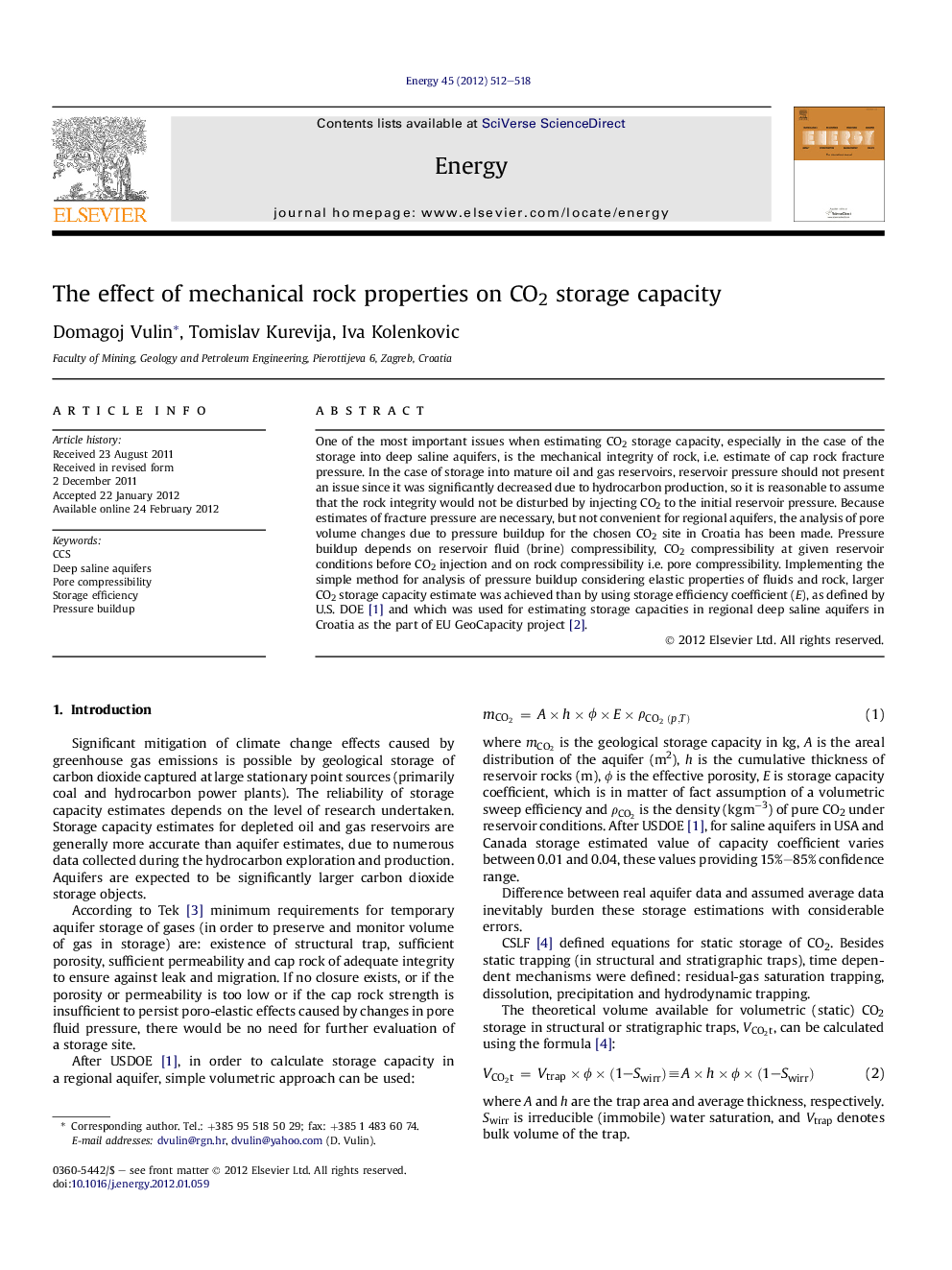| Article ID | Journal | Published Year | Pages | File Type |
|---|---|---|---|---|
| 1733697 | Energy | 2012 | 7 Pages |
One of the most important issues when estimating CO2 storage capacity, especially in the case of the storage into deep saline aquifers, is the mechanical integrity of rock, i.e. estimate of cap rock fracture pressure. In the case of storage into mature oil and gas reservoirs, reservoir pressure should not present an issue since it was significantly decreased due to hydrocarbon production, so it is reasonable to assume that the rock integrity would not be disturbed by injecting CO2 to the initial reservoir pressure. Because estimates of fracture pressure are necessary, but not convenient for regional aquifers, the analysis of pore volume changes due to pressure buildup for the chosen CO2 site in Croatia has been made. Pressure buildup depends on reservoir fluid (brine) compressibility, CO2 compressibility at given reservoir conditions before CO2 injection and on rock compressibility i.e. pore compressibility. Implementing the simple method for analysis of pressure buildup considering elastic properties of fluids and rock, larger CO2 storage capacity estimate was achieved than by using storage efficiency coefficient (E), as defined by U.S. DOE [1] and which was used for estimating storage capacities in regional deep saline aquifers in Croatia as the part of EU GeoCapacity project [2].
► The analysis of pore volume changes due to pressure buildup for the chosen CO2 site in Croatia has been made. ► Larger CO2 storage capacity estimate was achieved than by using storage efficiency coefficient. ► Pore volumes calculated by using pore compressibility are larger than storage volumes without poro-elastic definition. ► Pore compressibility increases with increased amount of injected fluid, i.e. with increase of aquifer pressure.
